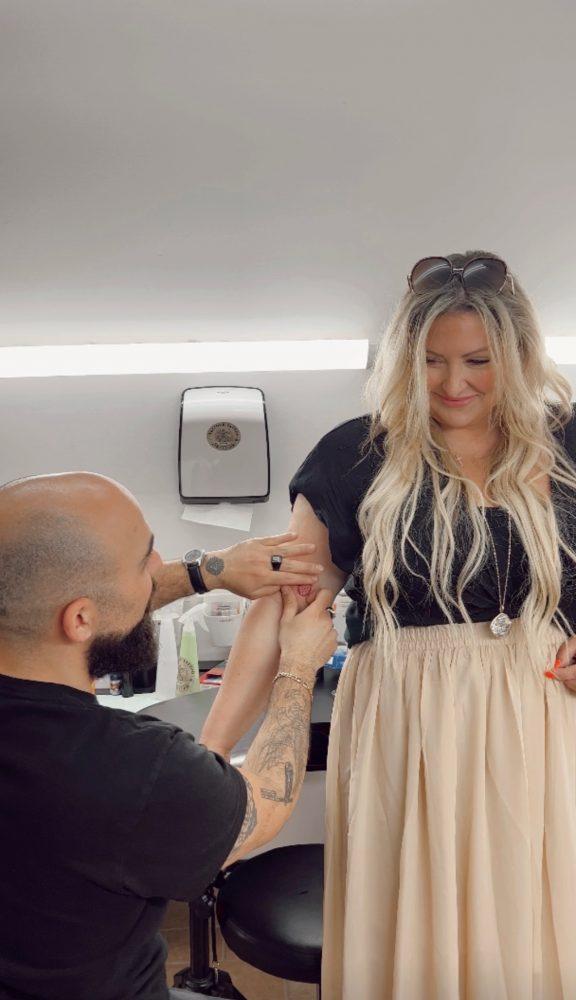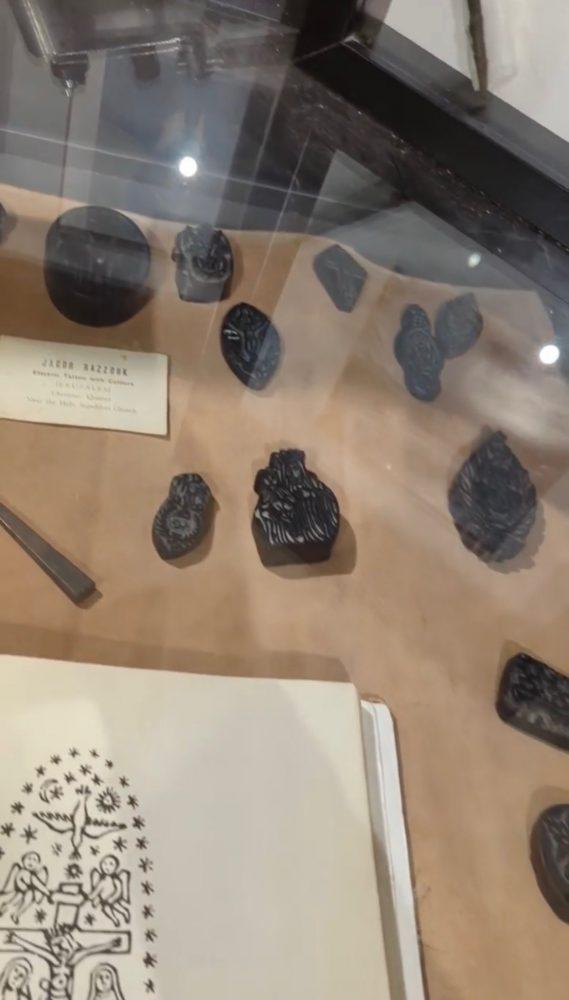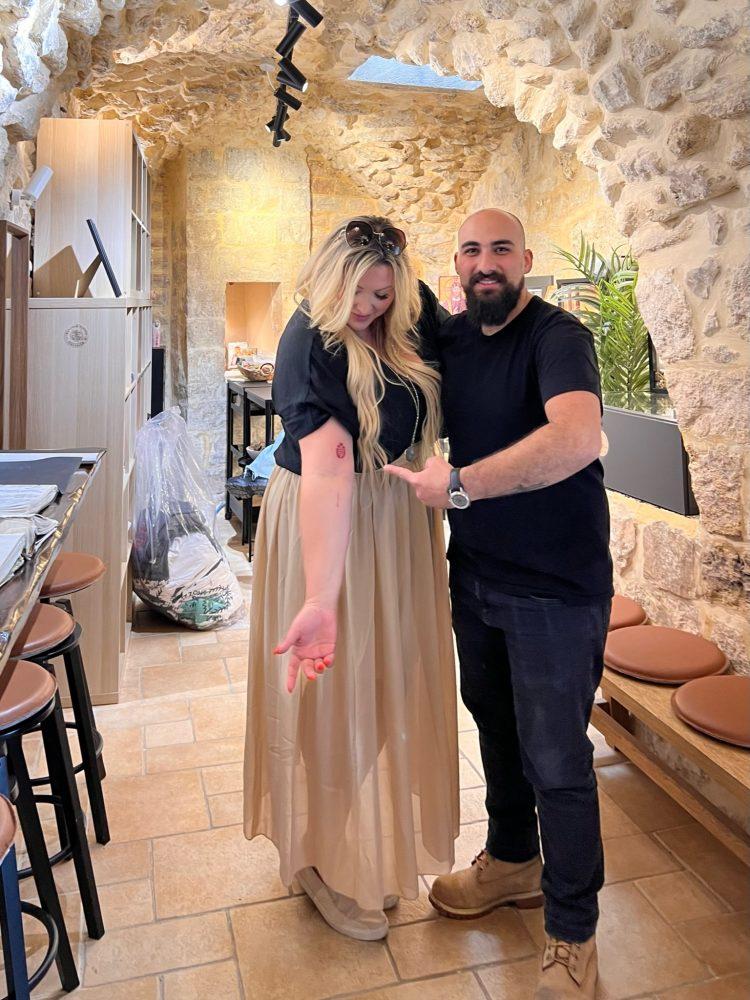
I got a tattoo in Jerusalem that uses a 700-year-old technique
As a female travel blogger, I’m always on the lookout for unique experiences that allow me to immerse myself in different cultures. So when I heard about the Razzouk Tattoo in Jerusalem and their 700-year-old tattooing technique, I knew I had to go. In the Old City of Jerusalem, there are layers upon layers of history and we’re just scratching the surface.
To commemorate my journey to the Holy Land, I got a tattoo that uses their famous 700-year-old technique I’d never seen before, and on Palm Sunday no less!
Razzouk Tattoo is the oldest tattooing family business in the world. They use hand-carved wood blocks to stamp an ink impression on the skin as a stencil. this centuries-old tradition of tattooing in the Holy Land goes back in written records to at least the 1600s and quite possibly much earlier.
The History
The first evidence of a Christian tattoo tradition traces back to the Holy Land and Egypt as early as the 6th or 7th Century. From there, the tradition spread throughout Eastern Christian communities such as the Ethiopian, Armenian, Syriac, and Maronite Churches. To this day, many Coptic Churches require a tattoo of a cross or other proof of Christian faith to enter a church. (Tattoo traditions among groups such as Celtic and Croatian Catholics emerged separately and at a later date.)
With the advent of the Crusades beginning in 1095, the existing practice of tattooing pilgrims to the Holy Land expanded to European visitors. Numerous accounts dating back to the 1600s describe Christian pilgrims taking part in already long-existing customs of receiving a tattoo upon completing a visit to the Holy City – a custom that survives to this day.
Wassim is part of a 700-year-old family tattooing tradition, passed down from his father’s side. Developed in Coptic Egypt, and brought to the Holy Land some 450 years ago. His precision, artistry, and his family’s impressive history in the region have attracted scores of international pilgrims, tourists, and locals to participate in a centuries-old Christian practice.
Tattooing among Christians became central to identifying themselves with the suffering of Jesus Christ
He runs a modest tattoo shop in the Christian quarter of the Old City. However, during Easter and Christmas, Wassim receives too many clients to accommodate them there, forcing him to swiftly transform the spacious halls of local monasteries into makeshift tattoo studios.



The Process
It’s crazy to think the Razzouk family has been tattooing pilgrims with their traditional designs for more than 700 years. Making them the oldest tattooing family business in the world. Their technique involves using wooden blocks that have been passed down through generations of the family to stamp designs onto the skin. The designs are typically Christian symbols and motifs, such as the Jerusalem cross, which has been associated with Christian crusades, heroism, and knights, but especially with Jerusalem, especially when it comes to tattoos.


When I arrived at the Razzouk Tattoo parlor, I was greeted and they explained to me the history and significance of their tattooing tradition. They showed me the wooden blocks that are used in the tattooing process. The shop was amazing and there are old photos everywhere. I was amazed by the intricate designs and the craftsmanship of the blocks in the glass cases. They have been carved with various, mostly Coptic Christian, tattoo designs. If you don’t want to get a tattoo they have other cool merch you can take home to commemorate your journey and take home a piece of this story.
Chris Bullata did my tattoo and as he began the tattooing process, I was struck by the level of care and attention he put into placing the stamp. He made sure the design was perfectly aligned. The process was surprisingly quick and painless. I was left with a beautiful and meaningful tattoo that I will cherish forever. I even got tattooed next to the 28th-generation Nizar Razzouk.
You can watch it here.
After the tattoo was finished, Chris shared with me the deeper meaning behind the Jerusalem cross tattoo and the legacy it carries. The tattoo has been used by pilgrims to commemorate their journeys to Jerusalem for centuries. Even notable figures such as King Edward VII of England and King Frederik IX of Denmark have gotten the tattoo. The Razzouk family’s tattooing tradition is a testament to the enduring power of faith and pilgrimage. Their wooden blocks are a tangible link to the past that connects us to the pilgrims who have come before us. Once used as a mark to differentiate Christians, tattoos are being reclaimed as a display of faith for those on pilgrimage to the Holy Land


My Tattoo
The design is from the original 350-year-old stamp of the Jerusalem Cross which was the main design chosen by the Crusaders and Knights. They would have tattoos on their forearms to show that they have served in the Holy Land. Likewise, pilgrims would have the Jerusalem Cross tattooed on them as a certificate of their pilgrimage to the Holy Land.
My tattoo of the Jerusalem Cross is surrounded by three crowns on top representing the Holy Trinity. To Celts, the three points represent the natural elements of earth, air, and water. On a spiritual level, it has also been thought to symbolize life, death, and rebirth. Christians associate the symbol with the Holy Trinity: the Father, the Son, and the Holy Spirit (or Holy Ghost).
At the bottom of the design is an olive branch representing the Mount of Olives and peace. The palm branch represents Jesus entering the Holy City. It’s a symbol of victory, triumph, and eternal life, all of which Jesus has brought into our lives. It was so cool to get this tattoo on such a holy day like Palm Sunday in the Holy Land. Its an indescribable feeling.
The Jerusalem cross itself is composed of five crosses with the center and largest cross symbolizing Jerusalem as the center of the world. The four small crosses as the gospel spreading to the four corners of the world. It also represents the 5 wounds of Christ. Others say it represents Jesus and the Four Apostles.
Getting this tattoo was more than just an experience for me. It’s not just any tattoo you can get anywhere else in the world. It was a way to connect with the heritage and tradition of the Holy Land, the Christian pilgrims, and the Razzouk family. It’s a timeless piece of history that I can now carry with me wherever I go.
So, if you’re ever in Jerusalem, be sure to stop by the Razzouk Family’s tattoo parlor and get yourself a piece of history. Trust me, it’s an experience you won’t want to miss.
Thanks, @chrisbullata for the ink
Thanks for the b roll @sjlin and for filming my tattoo @skhammer
Conclusion
In conclusion, my experience at the Razzouk Tattoo parlor in Jerusalem was truly unforgettable.
If you’re ever in Jerusalem, I highly recommend visiting the Razzouk family and experiencing their unique tattooing tradition for yourself. It’s not just any tattoo you can get anywhere else in the world – it’s a timeless piece of history and a symbol of faith and pilgrimage that will stay with you for a lifetime.



